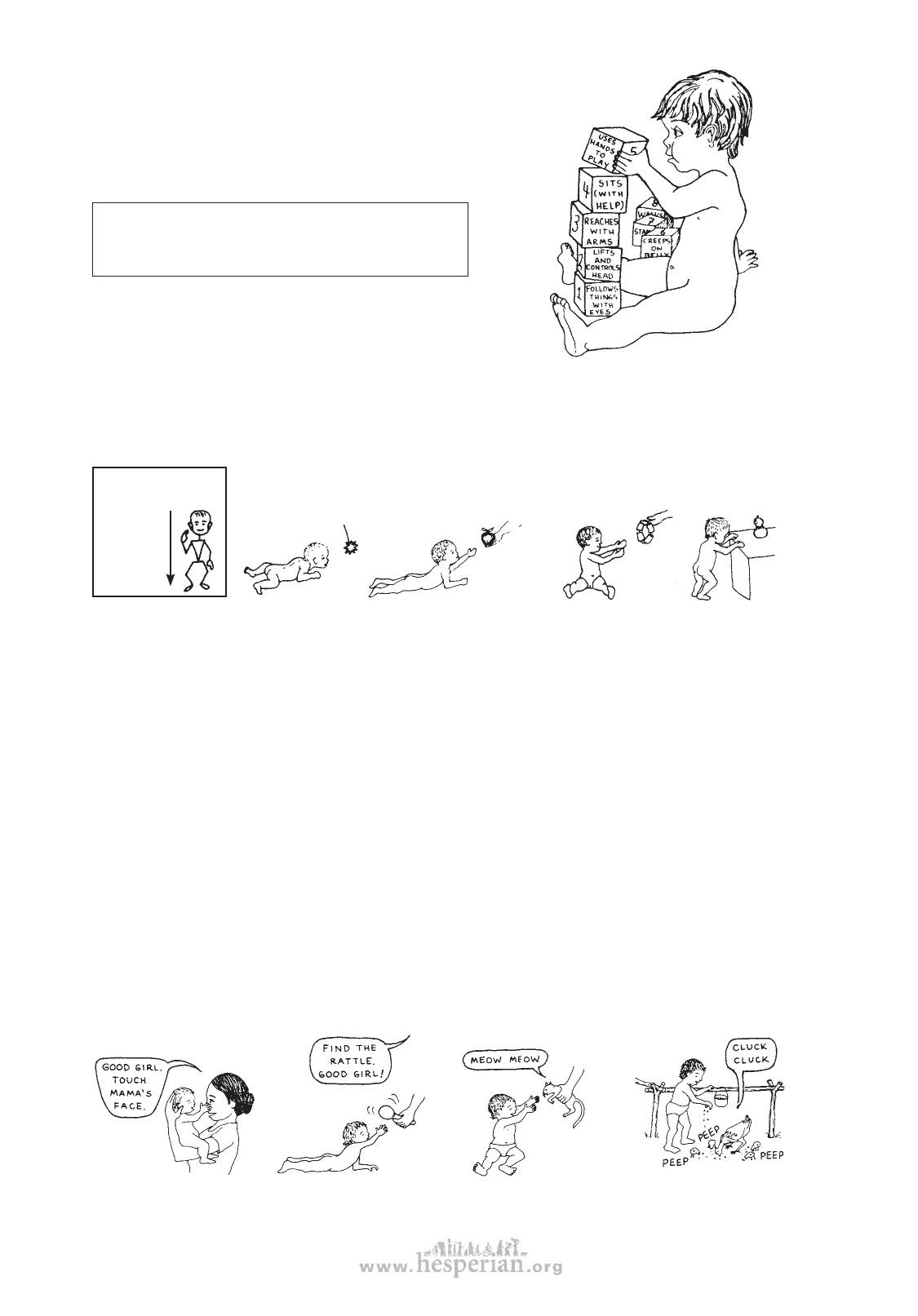
290 chapter 34
NORMAL CHILD DEVELOPMENT
In order to know how well a child is developing and
in which areas she may need special help, we can
compare her development with that of other children.
An understanding of normal child development can
guide us in planning activities that will help the
disabled child progress.
Every child develops in 3 main areas: physical
(body), mental (mind), and social (communication
and relating to other people). In each area, she
develops skills step by step in a certain order. During
the first year of life, normally a baby gains more and
more control of her body.
A child’s abilities develop in a
particular order, one upon the other,
like building blocks.
Body control develops progressively from the head down:
Development
progresses
from head
first, head and
eye control
next, arm,
and some hand
control
then trunk (body)
control, sitting,
and balancing
and finally
leg control
to foot.
Before she can begin to walk, a baby needs to go through a series of developmental
stages, or ‘levels’. First, she has to be able to hold up her head and see what is around
her. This encourages her to use her arms and hands so that she can then learn to lift
herself to sit. While sitting, she begins to reach, lean, and twist. All this helps her to
develop balance and to shift her weight from side to side—skills she will soon need for
standing and walking. Normally, the stimulation that a child needs to advance through
these stages comes from ordinary day-to-day interaction with people and things.
However, a child who has a disability may need special help to keep progressing.
Notice that in the above example, the child’s ability to see makes her see things and
want to reach for things and explore. Seeing stimulates her to try to learn and do
more. If a child cannot see, this basic part of early stimulation is lacking. To prevent
her from falling behind, we must look for other ways to encourage her to learn and do
things. We can do this through touch and sound, adapting the type of stimulation we
use to the child’s particular stage of development. For example, if a baby cannot see:
From the first we should
hold her and speak to her
a lot. Help her to reach out
to touch and feel different
things.
Later, we can encourage
her to lift and turn her
head, and then reach out,
toward different sounds.
When she begins to sit,
again we can help her to
recognize different sounds
and reach toward them.
When she begins to
walk we can help her
find her way with guide
poles, and in other
ways.
For more ways to help a child who cannot see well, see Chapter 30.
Disabled village Children